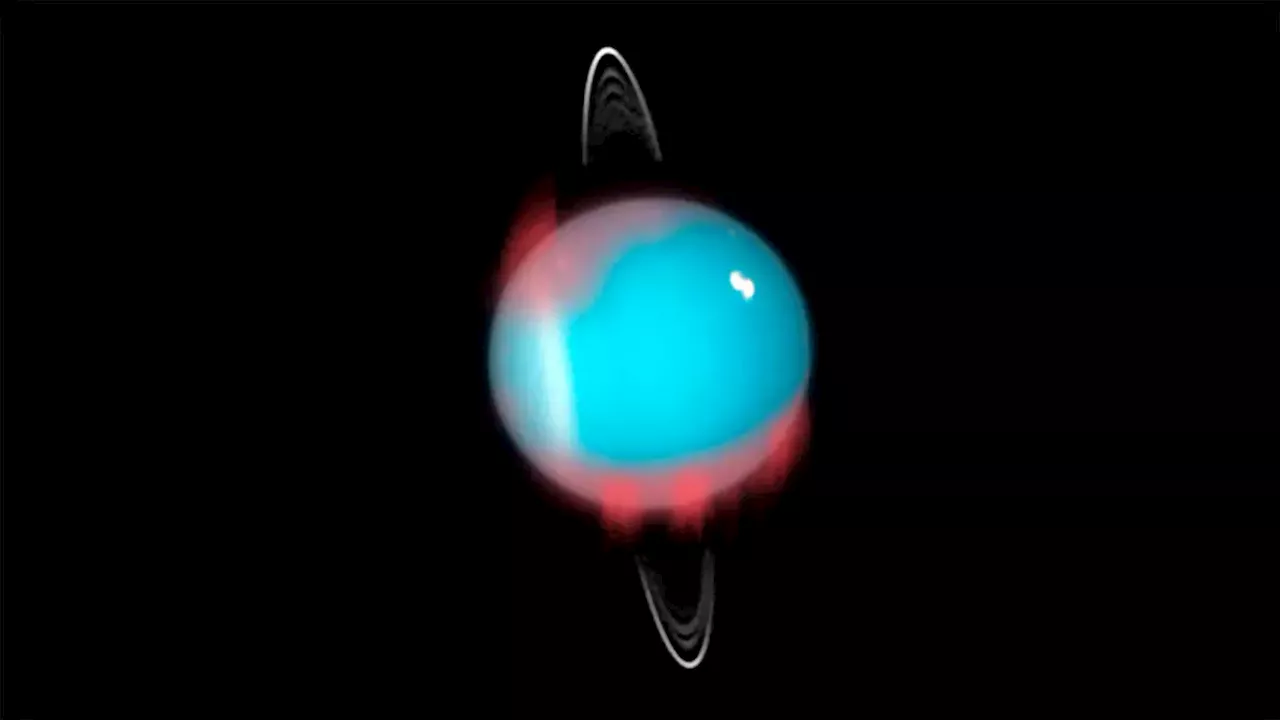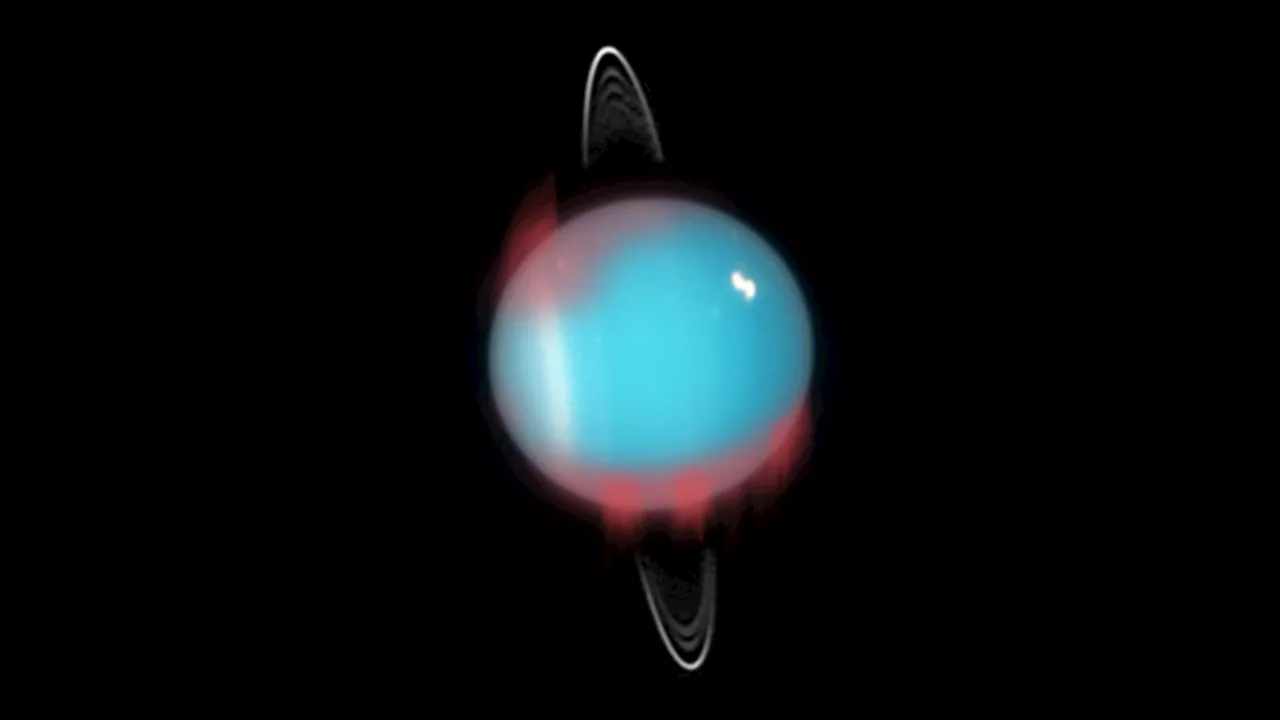Observations of Uranus in 2006 detected infrared auroras on that distant ice giant planet. They may help us understand similar exoplanets.
A simulation of the infrared auroras at Uranus. Credit: NASA, ESA and M. Showalter for the background image of Uranus
Auroras happen when charged particles in the solar wind and near-planet environment get trapped by a planet’s magnetic field. They funnel down to the atmosphere and collide with gas molecules. This happens on Earth and we see auroras over the north and south poles of our planet. They also happen at other planets. Astronomers detect them on the other giant planets, and a smaller version of them occurs on Mars.
A NASA computer simulation of a reversal. The tubes represent magnetic field lines . Earth’s rotation axis is centered and vertical. The dense clusters of lines are within the Earth’s core.
United States Latest News, United States Headlines
Similar News:You can also read news stories similar to this one that we have collected from other news sources.
 Discovering Uranus’ Glow: New Hints for Life on Icy ExoplanetsScience, Space and Technology News 2023
Discovering Uranus’ Glow: New Hints for Life on Icy ExoplanetsScience, Space and Technology News 2023
Read more »
 Your Halloween Horoscope Just Dropped—Here's What The Stars Have In StoreThe Venus-Uranus trine is spicing things up.
Your Halloween Horoscope Just Dropped—Here's What The Stars Have In StoreThe Venus-Uranus trine is spicing things up.
Read more »
 Your Halloween Horoscope Just Dropped—Here's What The Stars Have In StoreThe Venus-Uranus trine is spicing things up.
Your Halloween Horoscope Just Dropped—Here's What The Stars Have In StoreThe Venus-Uranus trine is spicing things up.
Read more »
 Discovering Uranus’ Glow: New Hints for Life on Icy ExoplanetsScience, Space and Technology News 2023
Discovering Uranus’ Glow: New Hints for Life on Icy ExoplanetsScience, Space and Technology News 2023
Read more »
 Infrared aurora on Uranus confirmed for the 1st timeKeith Cooper is a freelance science journalist and editor in the United Kingdom, and has a degree in physics and astrophysics from the University of Manchester.
Infrared aurora on Uranus confirmed for the 1st timeKeith Cooper is a freelance science journalist and editor in the United Kingdom, and has a degree in physics and astrophysics from the University of Manchester.
Read more »
 Astronomers Spot New Aurora in the Gases Around UranusThe planet’s atmosphere is mixing with particles, producing a newly discovered infrared aurora.
Astronomers Spot New Aurora in the Gases Around UranusThe planet’s atmosphere is mixing with particles, producing a newly discovered infrared aurora.
Read more »
